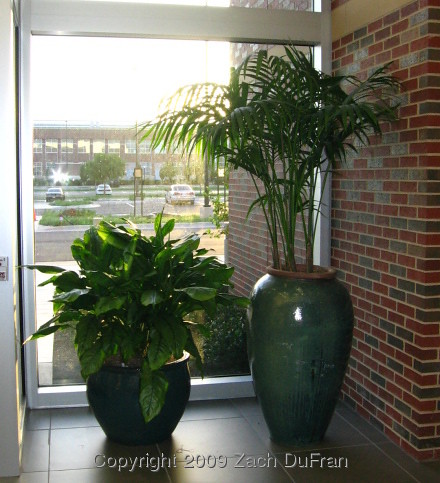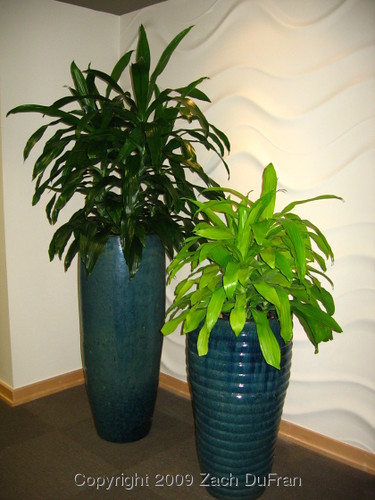Seeing that the 100th post is kind of a monumental occasion, I decided I should probably have a good one. I'm not sure what constitutes a good post in your mind, but I consulted with my wife and we agreed that this topic is one where I have focused a lot of attention. Also, this topic shows how far I've come since I began writing this blog.
Some people I encounter assume I know
everything about plants, simply because I know their names. While this is a huge exaggeration, knowing the names of plants seems like a good place to start - at least for finding more information about a particular plant. And the names themselves can often tell you some interesting things about the plants, but that's for another post.
As someone who desires to know the botanical name (genus and species) of every plant I have, I must admit it is sometimes hard to do this. Many times plants that I buy are without a label or contain a label with only a common name. Worse yet, sometimes the plant contains a generic label that says "Tropical Plant," "Foliage Plant" or "Annual." These kinds of labels have some degree of helpfulness. They can help you get a feel for where to grow the plant or how long you can expect it to stick around, but they're not so helpful when it comes to honoring the plant by calling it by name. :) When I purchase a plant with one of these labels, it is usually at a large store like Lowe's or Wal-Mart, where the employees have little or no knowledge of the plants. It's unlikely they will be able to identify the plant for me.
To be honest, I don't even bother asking employees the names of plants most of the time. I actually enjoy the hunt. It's an educational experience to track down the botanical name of a new plant.
Other times, I bring plants home that were not purchased, but collected. In these cases, I have very little information to go on, other than the location where the plant was collected and the usual physical description.
The Hunt
My methodology for discovering a plant name depends on the plant. If the plant is what I would consider an average Joe plant that is widely grown (and I am just unfamiliar with it), I will usually try to find the common name first and then look up the correct botanical name with
wikipedia or
Dave's Garden.
At this time let me be clear that neither of these two sources are guaranteed to have correct information. Both contain errors - some that are easy to see and others that are very well disguised. However, I think most of the time there are enough eyes looking at these two highly-trafficked websites that the information is pretty good. On davesgarden, I check to see that the images associated with this botanical name match the plant that I have on hand. Usually all of the images on one page will match, but I have seen some cases where completely different plants were posted to the same page - ech!
There are a number of other websites with more accurate information. Sometimes I consult those websites, but usually only when I think the plant is commonly misidentified.
After gathering the genus and species name from one or both of these sites, I usually do a quick Google image search for that particular pair of names. This is just for good measure. It also provides me with an idea of other plants that are commonly mistaken with this plant and plants that are closely related (in the same genus). By this point, I am usually pretty satisfied that I have captured the correct botanical name for my average Joe plant.
The Hunt becomes difficult
For more unusual plants, I am a little more careful. In most cases these plants do not have common names. In many cases I am able to guess a genus or a family, based on the physical characteristics and other plants that I have which are similar. If I don't have any similar plants and can't recall any names of similar plants I have seen before, one method is to post pictures to a variety of different websites. One such site is the
"Name that Plant" forum on gardenweb. That forum is specifically dedicated to identifying plants by physical descriptions and pictures. Another potential forum is a family, type or region specific forum (i.e.,
Cacti Forum,
Tropical Plant Forum,
Houseplant Forum,
Tree Forum,
Oklahoma Gardening Forum). Many times the members who frequent these forums are very helpful, very friendly and you can learn a lot from their responses. Often it is a group effort to narrow the search to the specific genus and species.
I have used the "Name that Plant" forum dozens of times, but I really like to try to struggle with a plant's identification for several days before I break down and ask for help. That's just because I like to do it myself and I have fun with the process. If you're not so inclined, that's fine. The forum is there specifically for this purpose.
If you're a person who likes the challenge of identifying plants, you might find yourself becoming one of the regulars who helps others identify their plants on the forum. I have helped just a couple of people identify a plant when I have logged on to submit one of my own mystery plants.
I can now say with confidence that I know the botanical names (genus and species) of nearly every plant I own. There might be a plant here or there that I will forget, but most of them come to me quickly. It's just like learning the names of people - except I have more trouble with that. I imagine if I went home and entered people's names in a database after I had met them and categorized the database by families, I wouldn't have so much trouble. I'm sure those steps are helping me learn the names of my plants. But "Epipremnum pinnatum" is so much more fun to learn and recite than "John Brown," don't you think?

















